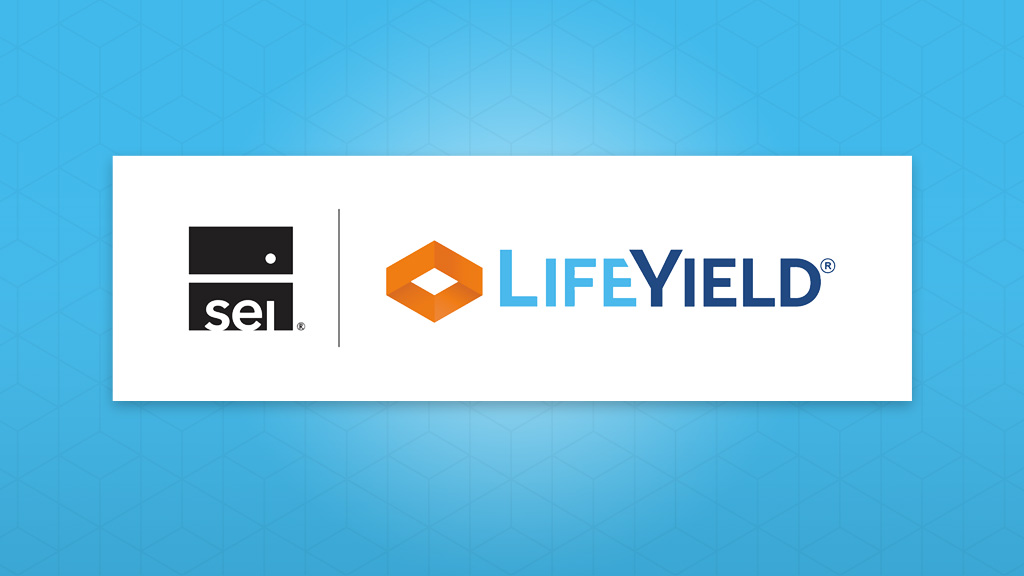Tax Efficient Accounts and a Tax-Smart Portfolio

Every investor who comes to your firm is looking to be tax-efficient, even if they don’t know it yet. Some approach you saying they want an advisor who can improve their investment returns. Others gripe that their current advisor’s service falls short. Most express a need for guidance to create a safety net for retirement and, at times, a legacy.
But ask every investor who comes in your door: “Do you want to pay more in taxes than you’re obligated to?” And they’ll mostly all answer with a loud and resounding, “No!”
Unfortunately, investors often aren’t getting that advice. The fault lies, in part, in themselves. They have taxable and tax-advantaged accounts scattered across firms and advisors. The tax consequences of their investments in one account aren’t accounting for the tax consequences of their investments in another account.
Recommending a tax-smart portfolio in this scenario is challenging – even impossible. Fortunately, there are tools that can help.
LifeYield technology works within your firm’s current tech stack to support advisors in asset location, multi-account rebalancing, tax-smart withdrawals, and tax harvesting. With the power of LifeYield integrated into their platforms, advisors demonstrate – without spreadsheets and hours of gathering account data – how to improve tax efficiency for clients.
Let’s look at the meaning of tax efficiency and the factors that make it challenging to assess across an individual’s or a household’s portfolio. Then I’ll tell you about how technology available to many advisors today can make tax efficiency a key part of your client conversations.
What is Tax Efficiency?
To put it simply, tax efficiency is when an individual or business pays the least amount of taxes required by law. When it comes to investments, the higher an investor’s tax bracket, the higher the need to craft a tax-efficient investment strategy.
Tax efficiency is a long game. Investors looking for a quick profit may be harder to convince to engage in tax-efficient investment strategies as, for example, investors saving for retirement would. Being able to quantify tax savings, however, can change how any investor approaches their overall portfolio.
Why should you educate and guide investors on tax efficiency? For one, taxes eat away investment gains. Investors are losing money when they are paying taxes on investment accounts. Investors are better off when their investments are located where they can flourish and still incur minimal taxes.
Second, investing time in educating and demonstrating tax-efficient investing benefits clients, your firm, and you. You demonstrate the value of your advice and perform your job with your client’s best interests at heart.
Different Types of Taxable Accounts
An investor’s accounts fall into one of two categories: taxable and tax-advantaged. Understanding what types of investments work best in each taxable or tax-advantaged account puts you as an advisor in a whole new light.
- Taxable accounts: Taxable accounts have few or no tax Brokerage accounts are a good example of a traditional taxable account. Because of the lack of tax benefits, brokerage accounts are often less restricted and more flexible than other types of taxable accounts. Investments held in these accounts for at least one year have more favorable tax rates – 0%, 15%, or 20%, depending on an investor’s tax bracket.
- Tax-Advantaged Accounts: Tax-advantaged accounts belong in one of two categories – tax-deferred and tax- Traditional individual retirement accounts (IRAs) and 401(k) plans are examples of tax-deferred accounts. These accounts provide upfront tax breaks and tax benefits for investors (and employers) when they contribute. Investors pay taxes when they withdraw money in retirement. This is why such accounts are called tax-deferred. Tax-exempt accounts include Roth IRAs and Roth 401(k)s, which work differently. Investors pay taxes on contributions to these accounts, but investments in these accounts grow tax-free and qualified withdrawals in retirement are also tax-free.
Potential Taxable Accounts Investors May Hold
| Taxable Accounts (example: brokerage) |
Tax-Advantaged Accounts (example: IRAs, 401(k) plans) |
|---|---|
| Individual stocks an investor plans to hold for at least a year | Individual stocks an investor plans to hold for less than a year |
| Tax-managed stock funds, index funds, exchange-traded funds (ETFs), and low-turnover stocks | Actively managed stock funds that generate significant short-term capital gains |
| Qualified dividend-paying stocks, dividend-paying mutual funds | Taxable bonds, inflation-protected bonds, zero-coupon bonds, and high-yield bond funds |
| Series I bonds, municipal bond funds | Real estate investment trusts (REITs) |
Clients Accumulate Assets over Time — and it Shows
Many investors have investments spread over an array of taxable accounts and in tax-advantaged accounts. You know how opportunities for investing have blossomed. And you know that you have investor-clients who can check one or more of these boxes:
- With job changes, an investor can have funded four, five, or (even many) more tax-advantaged accounts with various employers. When retirement is years away, many simply leave those accounts with a former employer’s plan, confident that time is on their side and their accounts, while they may fluctuate, will continue to grow.
- Many have taken advantage of employee stock-ownership plans to invest in individual stocks or received some compensation in stock options. When those companies have been successful, the result can be clients holding sizeable portions of their savings in single companies.
- With interest rates low, many have sought out investing in mutual funds, ETFs, and individual stocks and bonds to increase their personal wealth. Plus, the pandemic lockdowns brought armchair investors out in droves. With time on their hands – and the stories of meme stocks and cryptocurrency fueling their enthusiasm – many opened brokerage accounts and began trading.
- Higher-net-worth investors longed for the personalization available to institutional. Investors. They could get that by investing in separately managed accounts (SMAs) or unified managed accounts (UMHs). Some may have
Complicating the complexity of many client portfolios, in a busy world, two members of a household are often managing their accounts separately and independently. Chances are, however, that they are filing their tax returns jointly. Discussions of tax efficiency and, in retirement, tax-advantaged withdrawals may be happening only sometime between January 1 and April 15. And by then it can be too late.
Asset Location Strategy and Taxficient Score®
Asset location is a strategy for scanning every household account to find the tax-smart location – tax-qualified, taxable, or tax-exempt account — for each asset. The point of performing asset location is it helps with:
- Managing the big picture: Without knowing where assets are invested within a household, it’s difficult to manage the assets for tax efficiency.
- Planning goals and the timeframe: What is the point of clients’ investment accounts in the first place? How long can accounts grow before the clients will begin converting it to income and withdrawing from it?
- Managing tax implications: Tax codes change, which means today’s advice may not work next year. LifeYield technology is primed to do this for you, helping you figure out what opportunities clients have available to them.
Asset location isn’t about sheltering assets in accounts from taxes. It is about understanding the trade-offs that clients may make – usually unwittingly – between paying more taxes than they are required by law to pay and conserving more of their assets after taxes.
Clients may also need access to their assets at certain times – some of them planned, some of them not. This means your firm will need to know which accounts are most tax-advantageous for withdrawals.
Use the Taxficient Score® to Quantify Tax Savings
The Taxficient Score® is LifeYield’s approach to quantifying the tax efficiency of a household’s portfolio of assets. Advisors can, with ease, assess the tax efficiency of an individual’s or a household’s portfolio and recommend how to improve it.
In brief, LifeYield technology assigns a score on a scale of 0 to 100 – something that’s easy to explain and for clients to understand. LifeYield Asset Location then produces a blueprint for how a household can improve the score through better account tax efficiency.
The process goes beyond a simple score, however. LifeYield Asset Location then estimates the dollar value of making the recommended changes in asset location – in other words how improving tax efficiency can lead to more dollars in pockets in retirement. For some clients, that can be in six figures – convincing and compelling reasons to work with you and your firm.
Household View Paints a Deeper, Richer Picture
Many clients may come to you for advice, but their accounts reveal only a part of the picture. Most married couples file their income tax returns jointly. So to evaluate tax efficiency with accuracy, you have to know all of the accounts that each spouse has.
In other words, you need to reach for the unified managed household (UMH) view. Taking a UMH approach requires knowing every taxable and tax-advantaged account that belongs to household members. You cannot recommend how to minimize taxes through different tax-efficient investment strategies unless you do.
Another important thing about a UMH approach is that it coordinates investments and potential income sources from non-traditional places, like real estate, insurance, and traditional ones, like Social Security, minimum required distributions, annuities, and pensions.
Your role as an advisor is to make the most out of client and household portfolios by coordinating assets across accounts in the most tax-efficient way possible. Old manual methods for achieving tax efficiency across accounts no longer make sense. They take too long, and they invite human error.
Technology from LifeYield can provide a more comprehensive picture of a household’s accounts – including an evaluation of their tax efficiency. Products like LifeYield Asset Location and its Taxficient Score bring about client conversations that produce better results for households and stronger client acquisition and retention for your firm.
Better yet, LifeYield gives you the black-and-white results for how to improve account tax efficiency and, when clients are ready, tax-smart withdrawals.
LifeYield technology can bring new capabilities to your firm without disrupting or displacing the strong tech stack you have built and trained your advisors on.
Monthly insights from our Chief Growth Officer, Jack Sharry
Get exclusive insights and interviews from around the industry

 By
By 




